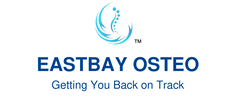Acupuncture
Acupuncture is a major component of Traditional Chinese Medicine (TCM) that has been used for many years. During an acupuncture treatment session fine needles are inserted in different parts of the body known as the acupuncture points where patients may feel an “ache” and/or a “dull” sensation, known as “De Qi”.
In Traditional Chinese Medicine, each acupuncture point is within a specific meridian that can be used to facilitate healing. In Western Acupuncture (WA), the same acupuncture points and meridians are used; however, its rationale is based on neurophysiology and human body anatomy. The acupuncture points may be used to achieve an increase in local blood flow and/or affect the nervous system for analgesic effects. Acupuncture can be used to treat a wide range of disorders including:
Our ACC registered acupuncturists are certified and offer a professional, relaxing and friendly environment for all acupuncture treatments.
In Traditional Chinese Medicine, each acupuncture point is within a specific meridian that can be used to facilitate healing. In Western Acupuncture (WA), the same acupuncture points and meridians are used; however, its rationale is based on neurophysiology and human body anatomy. The acupuncture points may be used to achieve an increase in local blood flow and/or affect the nervous system for analgesic effects. Acupuncture can be used to treat a wide range of disorders including:
- musculoskeletal injuries (e.g. muscle tear, ligament sprain, low back pain)
- headaches and neck pain
- pregnancy and fertility
- anxiety, behavioral and sleeping problems
- digestive conditions (e.g. Irritable Bowel Syndrome)
- degeneration (wear and tear disease such as osteoarthritis in spine, hips and knees)
- nerve pain (e.g. sciatica, Carpal Tunnel Syndrome)
Our ACC registered acupuncturists are certified and offer a professional, relaxing and friendly environment for all acupuncture treatments.


